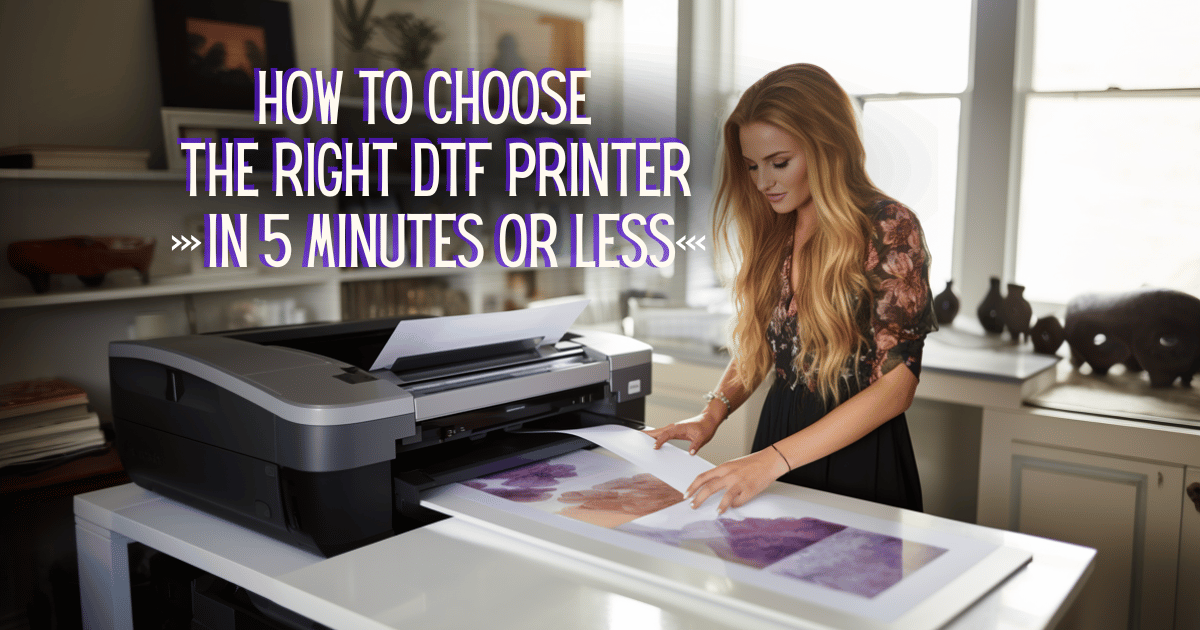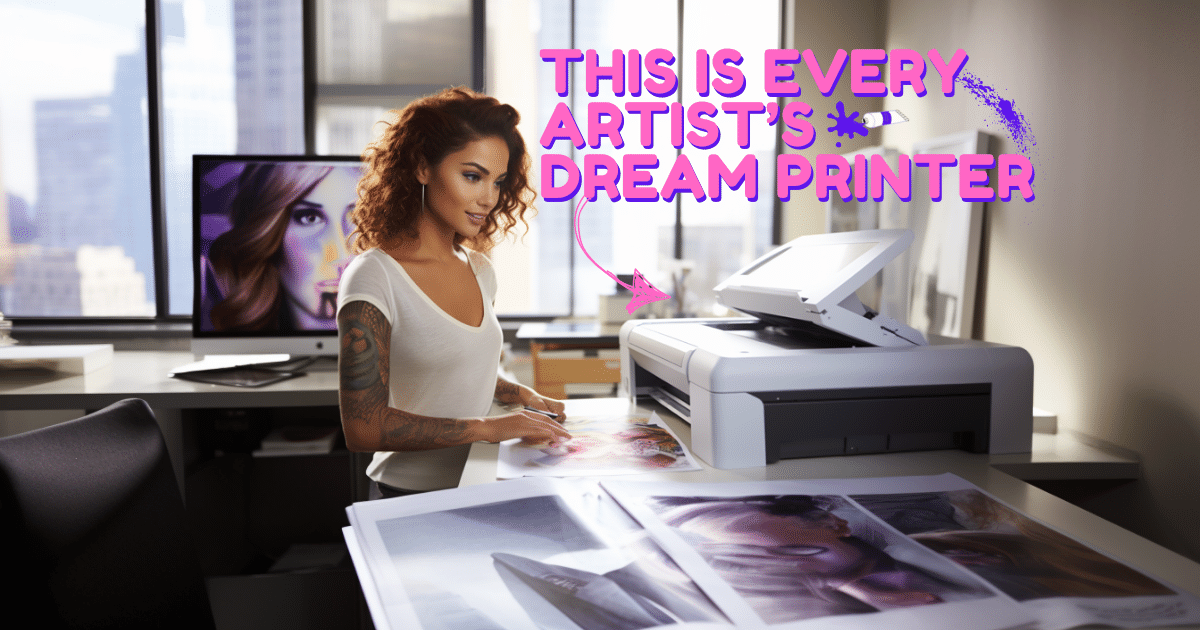Everything You Need To Know About DTF Printing Before Getting Started! 🎨👀
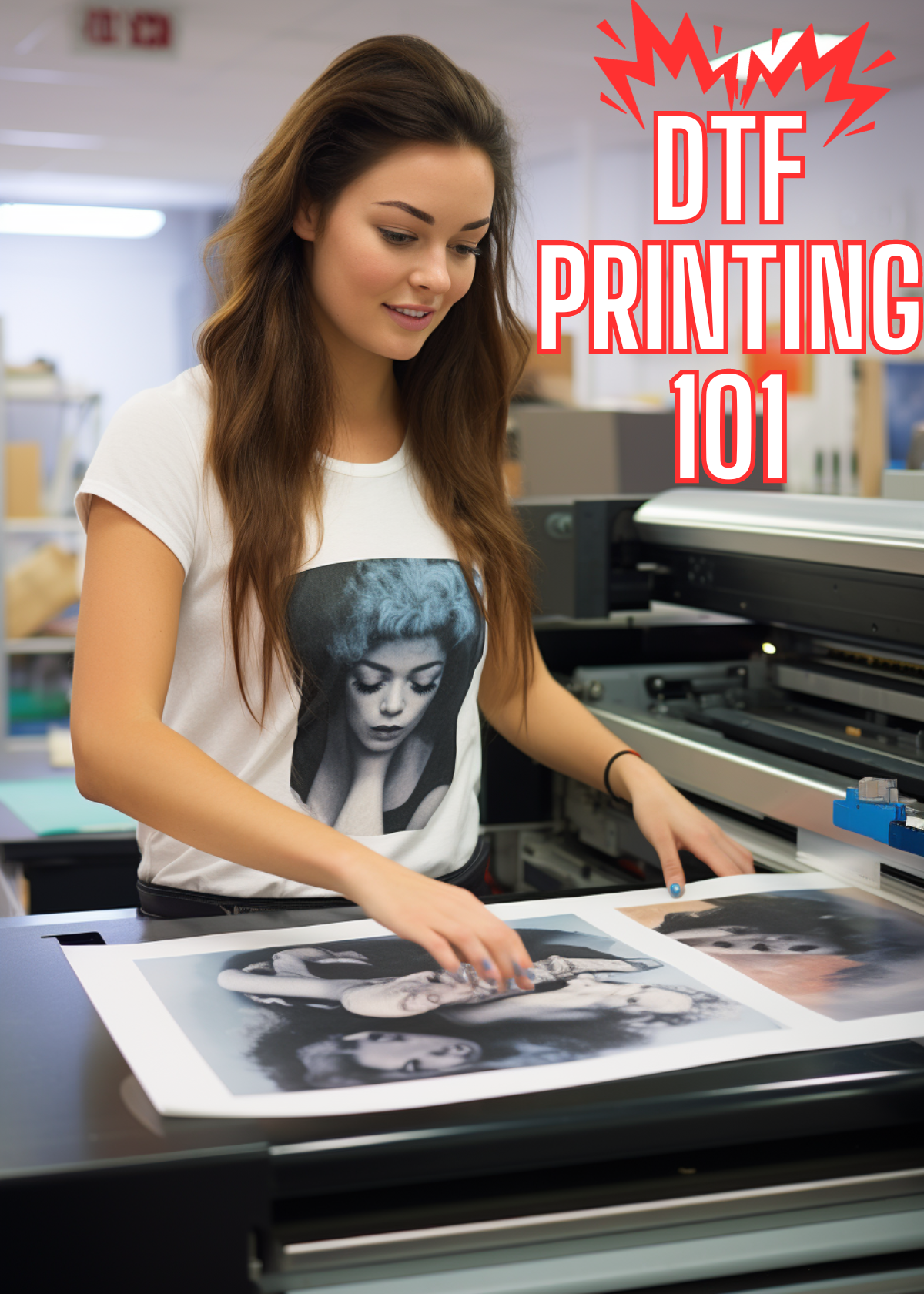
DTF printing stands for Direct Film printing, an eco-friendly digital printing process that involves printing photos or graphics directly onto polyester film sheets which are then heat transferred onto fabric. DTF printing gives durable, long-lasting photo-quality prints on apparel like T-shirts, polo shirts, hoodies, and more.
The key process involves using a specialized DTF printer to print sublimation inks directly onto polyester transfer film sheets. The printed film is then cut to size and heat transferred onto the fabric using a heat press machine. A Teflon sheet is often placed between the fabric and film during heat transfer to protect the print from abrasion or damage.
DTF printing offers numerous benefits high-resolution photo-quality prints, vibrant colors, the permanence of the print, versatility to print on multiple fabrics, the ability to edit sizing and design before printing, cost-effectiveness for bulk orders, and eco-friendliness. This article discusses the DTF printing process in detail along with factors to consider when choosing a DTF printer, the pros and cons of this printing method, and how to get the best results.
⏩ What is a DTF Printer and How Does it Work?
A DTF printer (Direct to Film) is a type of industrial digital printer that prints images and graphics directly onto polyester transfer film sheets. Here is how it works:
The DTF printer uses specially formulated sublimation inks that can bond with polyester. These inks are able to withstand the high temperatures required for the heat transfer process.
Polyester transfer film sheets are loaded into the DTF printer. The printer prints the desired images or graphics directly onto the transfer film sheets using the sublimation inks.
The printed transfer film sheets are then cut to the desired shape and size using a cutting plotter or manually.
Also, the cut transfer film is then placed on the apparel item (T-shirt, hoodie, etc.) and a Teflon sheet is placed on top.
A heat press machine is used to apply high temperature and pressure on the transfer film and apparel for a certain amount of time. This helps the sublimation ink penetrate and bond with the polyester fibers in the garment.
Once cooled, the transfer film and Teflon sheet are peeled off to reveal the permanently printed design on the garment.
The high resolution and photo-quality results from DTF printing make it suitable for making custom apparel, promotional products, and uniforms in bulk quantities.
⏩ Why DTF Printers?
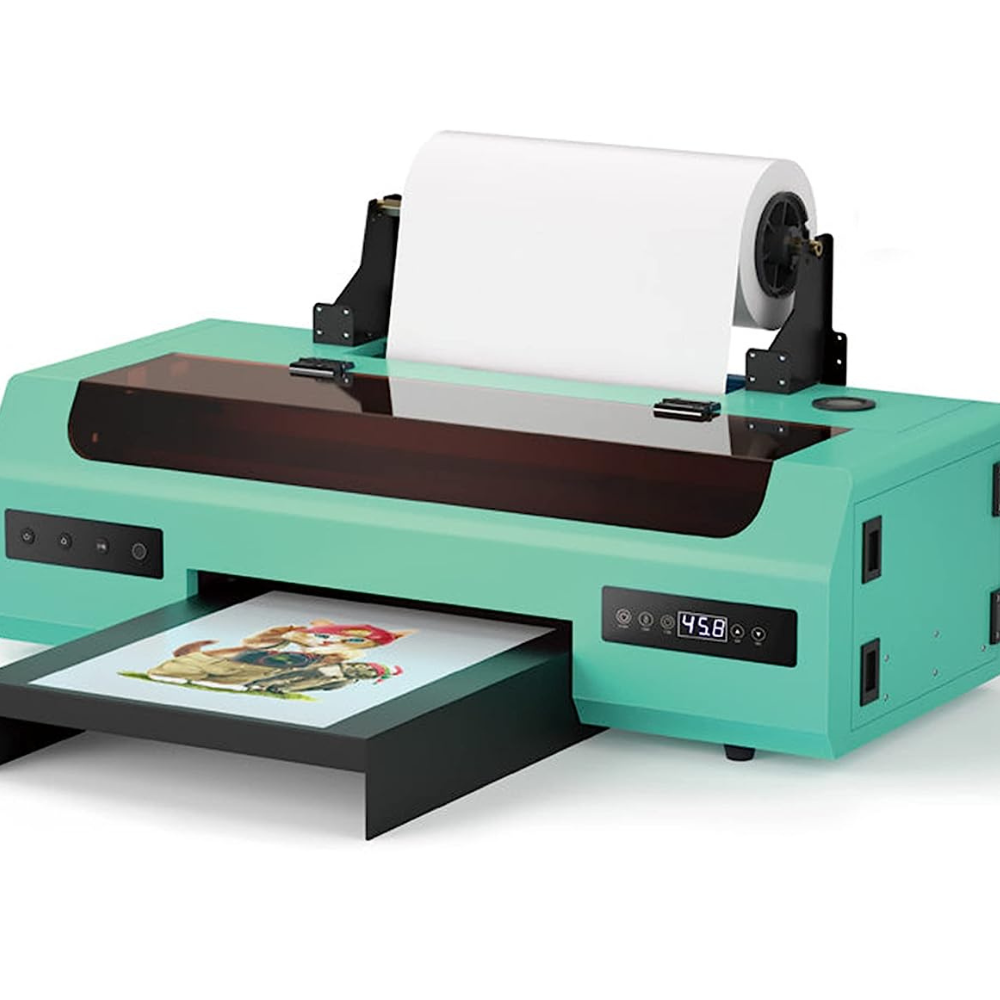
DTF printers offer several key advantages for producing high-quality prints on fabric and apparel. Their specialized sublimation inks can replicate the most vibrant colors and finest details for a premium finish.
DTF printers excel at printing on dark fabrics that are difficult to print on using traditional methods. The bright colors and fine color gradients that DTF printers can achieve really make the designs pop on both dark and light garments.
DTF printing eliminates many of the extra steps and treatments required in conventional printing processes. This simplifies the workflow while also saving on overall printing costs. The cost savings and efficiency can translate to higher profit margins for your business.
DTF printer technology is expected to see significant growth in the textile industry in the coming years. More and more textile and apparel companies are adopting DTF printing for its benefits like economical printing of customized fabrics and garments with quality and efficiency.
If you operate a t-shirt business or textile company and want to produce photo-realistic prints on fabric at scale, a DTF printer can be an excellent solution. The fine detail and wide color gamut that DTF printers provide make them ideal for printing promotional products, custom apparel, and uniforms. DTF printers offer several key advantages for producing high-quality prints on fabric and apparel. Their specialized sublimation inks can replicate the most vibrant colors and finest details for a premium finish.
DTF printers excel at printing on dark fabrics that are difficult to print on using traditional methods. The bright colors and fine color gradients that DTF printers can achieve really make the designs pop on both dark and light garments.
DTF printing eliminates many of the extra steps and treatments required in conventional printing processes. This simplifies the workflow while also saving on overall printing costs. The cost savings and efficiency can translate to higher profit margins for your business.
DTF printer technology is expected to see significant growth in the textile industry in the coming years. More and more textile and apparel companies are adopting DTF printing for its benefits like economical printing of customized fabrics and garments with quality and efficiency.
If you operate a t-shirt business or textile company and want to produce photo-realistic prints on fabric at scale, a DTF printer can be an excellent solution. The fine detail and wide color gamut that DTF printers provide make them ideal for printing promotional products, custom apparel, and uniforms.
How Much Does DTF Equipment Cost?
Setting up a DTF printing system for apparel personalization does not require a huge investment. You can get a complete starter kit for under $1,800 including the printer, sublimation inks, transfer paper, and software.
For around $1,800, you can get an A3 size DTF printer from ColDesi, along with CADlink Digital Factory v10 DTF Edition RIP software and all the necessary consumables to get started.
In addition to the DTF printer and inks, you will need a heat press or oven to cure the prints. If you already have a heat press, you'll just need to purchase the printer, RIP software, and consumables.
I recommend using a professional heat press with an upper platen that lowers vertically for even pressure. This ensures a consistent print surface height for curing the transfers. A quality heat press like the Brildor XH-B2N starts at around $800.
In total, you're looking at around $2,600 to fully set up your DTF printing system - which is a very reasonable investment for the premium print quality, cost savings, and profit potential you gain. The system allows you to personalize apparel for your clients with photographic quality images and colors in the most economical and efficient way.
➺ Differences Between DTF, DTG, and White Toner Printing
➤ DTF Printing:

• DTF stands for direct-to-film printing.
• Prints are done directly onto polyester transfer film sheets using special sublimation inks.
• The printed transfer film is then heat pressed onto garments using a heat press.
• Provides photographic quality images and vibrant colors.
• Suits printing on dark fabrics better than DTG.
• Ink is more expensive than DTG but cheaper than white toner.
• Initial costs are lower than DTG and white toner.
➤ DTG Printing:
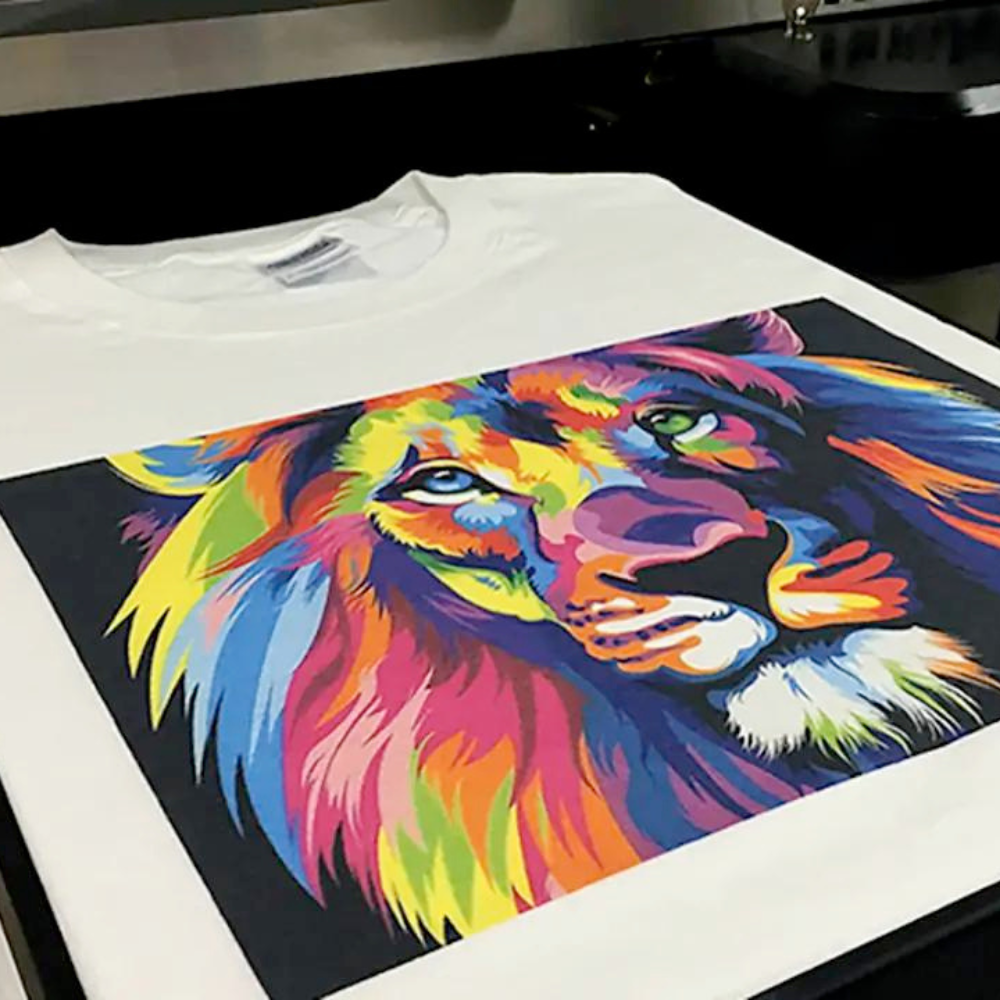
• DTG stands for direct-to-garment printing.
• Prints are done directly onto the garment using piezo inkjet print heads.
• High-resolution prints with rich color and photographic quality.
• No transfer process is required, prints are done directly onto the garment.
• Can print on a variety of fabrics including cotton, polyester and blends.
• Initial costs are higher due to the DTG printer but ink is cheaper than DTF.
• Prints on dark garments can be challenging and require pre-treatments.
➤ White Toner Printing:
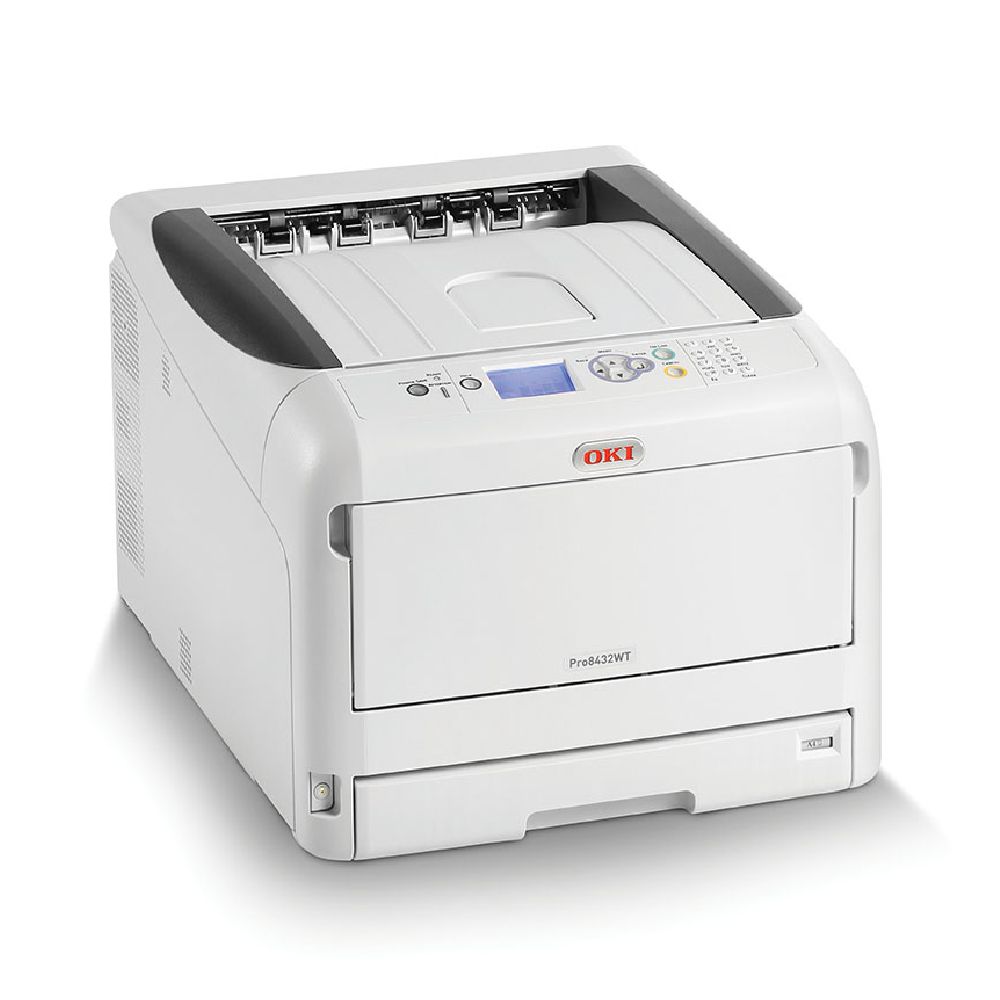
• Uses electro-photographic printing technology.
• Prints on transfer paper using white toner and color toner.
• The printed transfer paper is then heat pressed onto garments.
• Provides the highest resolution and sharpest text.
• Works best for printing light to medium-colored garments.
• Initial costs are the highest due to needing a white toner printer.
• Toner cartridges are more expensive compared to DTF and DTG ink.
➪ What You Need to Know About Before Your First DTF Print?
So, you're ready to dive into the world of direct-to-film (DTF) printing? Well, we've got you covered with all the essential information you need to know before getting started. Let's get right into it!
Pre-Requisites for Your First DTF Print
DTF Printers: First things first, you'll need a DTF printer specifically designed for direct-to-film printing. While some customers have successfully used their direct-to-garment (DTG) printers or modified their existing printers, we highly recommend investing in a dedicated DTF printer for the best results.
DTF Film: With DTF printing, you'll be printing directly onto the film itself, hence the name "direct-to-film". You can choose between cut sheets or rolls of DTF film, depending on your preference and printing needs.
Software: While you can use any DTG software for DTF printing, we highly recommend the Kothari Neo Rip. This powerful software offers additional benefits that will make your life so much easier. With Neo Rip, you can adjust the white levels on your prints, ensuring a soft hand feel without compromising on quality.
DTF Powder: The Secret Ingredient for Perfect Adhesion. To bind your print to the fabric, you'll need DTF powder. Think of it as the "glue adhesive" that ensures a strong and lasting bond. Make sure to choose a DTF powder that is compatible with your printer to avoid any clogging or other issues.
DTF Ink: The Perfect Match for Your DTF Printer: To achieve the best results, it's crucial to use DTF ink that is specifically designed for your DTF printer. This will ensure smooth printing without any compatibility issues. Depending on your printer, you can use direct-to-garment (DTG) or any textile inks.
➪ Optional Equipment
As your business grows or if you simply want to speed up your workflow, there is optional equipment that can optimize your DTF printing process. Let's take a look at a couple of them:
➛ DTF Air Purifier: While not required, we highly recommend incorporating a DTF air purifier into your workflow. This handy equipment helps with ventilation during the curing process, absorbing and filtering out any gases or dust, ensuring a clean and safe working environment.
➛ DTF Curing Oven: For Fast and Uniform Results: To speed up your production and achieve a stronger adhesion, a DTF curing oven or dryer is a great investment. This optional equipment melts the DTF powder more uniformly and efficiently, making your prints even better.
➛ DTF Powder Shaker Machine/Dryer: If you're tired of manually shaking the powder onto your prints, consider getting a DTF powder shaker machine. These machines not only shake off the excess powder for you but also come with a built-in dryer. Simply load your sheets, apply the powder, and let the machine do its magic.
➪ Step-by-Step Guide to DTF Printing
Now that you're familiar with all the essentials, let's walk through the DTF printing process step by step:
➛ Step 1 - Print on Film: Start by printing your CMYK colors first, followed by the white layer. The Kothari Neo Rip software allows you to do this in one pass, while other software may require multiple runs.
➛ Step 2 - Apply Powder: While the print is still wet, apply the DTF powder uniformly. This step is crucial for achieving a strong bond. Shake off the excess powder carefully, leaving only the print behind.
➛ Step 3.0 - Turn on and Adjust Air Purifier (Optional): If you have a DTF air purifier, position it near the steam or vapor outlet of your curing equipment to ensure proper ventilation.
➛ Step 3.1 - Melt/Cure the Powder: Depending on your equipment, either place your print in the curing oven at the recommended temperature or use a heat press to cure the newly powdered print.
➛ Step 4 - Transfer: Now that your transfer print is cooked and ready, it's time to transfer it onto your garment. Use a heat press at the appropriate temperature and time for optimal results.
➛ Step 5 - Cold Peel/Hot Peel: Depending on the type of DTF transfer film you're using, follow the instructions for either waiting until the print is completely cooled off or peeling it off while it's still hot. Then, remove the carrier sheet from the garment or fabric.
And there you have it! A comprehensive guide to DTF printing that covers everything you need to know before embarking on your first DTF print. Remember to always refer to the specific instructions provided with your DTF film for the best results.
✅ Pros and Cons of DTF Printers
Pros:
• High-resolution photos and detailed graphics. DTF printing provides photographic print quality on garments.
• Vibrant colors. DTF printers use special sublimation inks that can produce a wide color gamut.
• Permanence. The heat transfer process results in durable prints that last through multiple washes.
• Versatility. DTF printing can be used on a variety of fabrics like cotton, polyester, and blends.
• Easy design editing. Designs can be easily updated and reprinted with DTF printing.
• Cost-effective for bulk orders. DTF printing scales well for printing large quantities.
• Eco-friendly. DTF printing eliminates many chemicals used in traditional garment printing.
❌ Cons:
• High setup costs. DTF printers, RIP software, transfer film and heat press are expensive initially.
• Specialized equipment. DTF printing requires a DTF printer and transfer film specific to the process.
• Complicated process. The printing and heat transfer process has multiple steps and variables.
• Issues with dark garments. DTF printing works best with light or white garments.
• High consumable costs. DTF transfer film and ink have higher costs per print compared to DTG.
• Learning curve. It takes time to master all the settings and variables for optimum DTF printing.
• Strict handling. The printed transfer film requires careful handling before and during heat transfer.
Final Thoughts - Ready, Set, PRINT!
DTF printing is a convenient and cost-effective way to digitally print in full color on a wide variety of materials. It gives business owners flexibility in creating customized labels, stickers, signs, and promotional materials without the large upfront costs of traditional printing methods. As with any technology, there are pros and cons to consider, but with a proper understanding of the process and material selection, DTF printing can be a valuable tool for business marketing and product branding. As this printing technique continues to improve, with higher resolutions, wider color gamuts, and more material options, DTF printing will likely become even more mainstream for both small and large enterprises. For any business looking for a digital printing alternative that allows for high-quality, on-demand output in-house, DTF printing is worth exploring further.
Learn More About DTF Printing ⬇
